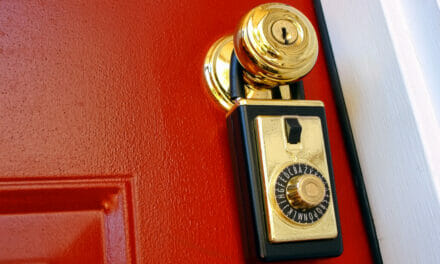During a home inspection we touch, test, move and/or inspect over 500 individual items in a home. It is imperative that we always leave the home in the same condition that we find it. Water heaters are one area that home inspectors will frequently receive customer service calls on if we make any changes and don’t leave the home with the water heater fully functional. We are going to discuss some of the most common areas for which home inspectors receive complaints or customer service calls involving water heaters. Some of these issues include: leaving the burn shield off of the water heater, not resetting the thermostat to its original setting, wires becoming loose during the inspection, damage occurring during the course of the evaluation, tripping a breaker/GFCI to which the water heater is connected and causing leaks by turning on/off valves and missing gas leaks.
By exercising the appropriate level of caution and care during your water heater inspection you will save time and money from having to deal with any customer service calls and revisiting the property to re-address these issues. You will also receive more referrals and happy customers from your real estate partners, past clients and property owners by not creating issues in this area.
When we perform a water heater inspection most of the evaluation is visual and we’re not doing anything to the unit that could cause damage or failure. One area where home inspectors do need to change the original condition of the water heater is when we remove the outer burn shield (assuming the unit has a removable cover). We want to be extremely careful when we take these off as many water heaters have electrical wiring that is routed through or beside these burn shields. We also want to make sure that we put the burn shield back in place so it properly protects the burn chamber and prevents foreign matter, debris, pets, etc. from entering the burn chamber. It is best practice to include a picture in your report of the burn chamber (while lit) and another once the cover plate has been put back and installed properly. Of course, if the water heater is not functioning during the home inspection we need to include the appropriate documentation in the home inspection report. If it is a newer, high-efficiency water heater that has an electric blower exhaust system, these units must be plugged in and have electricity to operate. It would be best practice if the water heater is not firing or operating to the outlet to see if there is electricity to the water heater. if there is no electricity and you’ve already inspected electrical panel it would be a good idea to re-check the electrical panel to make sure that you did not accidentally trip the breaker and turn off the water heater.
Another indication that you could’ve tripped the water heater breaker or GFCI during the inspection is if you have hot water when you do your temperature test at one of the sinks but when you get to the water heater there are no flames or it is not firing up. This could be an indication that the water heater stopped working working recently, and quite possibly during your home inspection. It would also be good practice for you, as the home inspector, to document that specific procedures were followed to verify that the breaker/GFCI was not tripped and to review these steps with the client and/or agent. This action could prevent a trip back out to the property to verify and confirm that the breaker is not tripped and/or the outlet did or did not have power to it during the inspection. During the home inspection it is NOT advisable to operate water shut off valves for a water heater. Turning older gate valves can break the seal and cause leaks and if the valve is turned off, we never want to turn the valve on because we don’t know if any of the systems downstream (potentially in the water heater) are damaged or leaking. We would document the condition of the valves and whether they were in the on or off position. That being said, It is good practice for inspectors to utilize their hands and touch the valves and water fittings to identify any small leaks in these areas. It is also best practice for the property inspector to take pictures of the water supply lines, shut off valves and drain valves to demonstrate that they were inspected and not leaking at the time of the inspection.
Similar to water valves, a home inspector does not turn or operate any gas valve. If your company policies and procedures require you to check for gas leaks with a gas detection device, you would want to check these areas and document with pictures exactly what equipment you were using and that you did check for gas leaks during the home inspection. As with any system in a home, water heaters can fail at any time so the home inspector will want to document all components in this area thoroughly to demonstrate that all relevant components were appropriately evaluated. One very important picture to include in your report is a picture of the flames in the burn chamber. This can be done even if it is an FVIR (Flammable Vapor Ignition-Resistant) system by utilizing the small viewing port and putting your camera up to the window. Turning your flash off will often help get higher quality pictures in this situation. This is the one picture that shows that the water heater was firing and operational at the time of the inspection so if the client, agent or homeowner does call and claims that the water heater is no longer operational, you have verifiable proof in your report that it was functioning at the time of the inspection. This will come in handy once the new owners take possession and move in after the home inspection and closing.
As a recap, never turn any water, gas, or other valves on the water heater. If your licensing, certification or company requires it, make sure to always check for gas leaks and document this thoroughly. If the water heater is not operational but does have an electrical connection, make sure to check the GFCIs and breaker prior to leaving the property. Be careful removing and reinstalling the burn shields not to damage any wiring and always take a quality picture to document the flames showing water heater was functioning at the time of the inspection. If/when testing gas lines, you should always triple check any suspected gas leak to ensure we aren’t receiving a false positive. This can be accomplished by removing your gas detector from the area where the leak was detected, allowing it to recalibrate and attempting to detect the leak again. Repeat this process a third time and document appropriately. As a final layer of redundancy, you can use the gas detector that never leaves your side by attempting to smell the leak. Potential leaks will often prompt the homeowner or listing agent to call a plumber or the gas company to correct the issue which is often accompanied by a fee. If a false positive is returned, the homeowner will likely ask the inspector to pick up the tab for a false positive reading. This also creates a credibility issue and could negatively impact your ability to generate referral business from these folks in the future. It’s always good practice to thoroughly document any defects and make sure to be mindful of the safety of the homeowners and your clients. Follow these steps and don’t let a water heater burn you!





